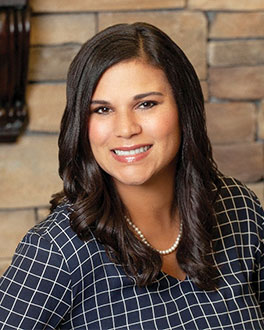Infectious diseases will continue to present challenges for long term care. While vaccines and treatments for COVID-19 have had a positive impact, antibiotic-resistant bacteria and other infections are creating concerns and demanding attention. The good news is that we know more than ever about infection prevention and control, and there are a plethora of tools, resources, and best practices to rely on.
Antimicrobial Resistance
Antimicrobial, or antibiotic, resistance happens when bacteria become immune to the medications designed to kill them. In the U.S. alone, more than 2.8 million antimicrobial-resistant infections happen each year, and these result in more than 35,000 deaths, according to the Centers for Disease Control and Prevention (CDC). The main cause of antibiotic resistance is antibiotic use, specifically the overuse of these medications. The more antibiotics people take, the greater their chances of becoming resistant to them.
Over the years, antibiotics have been a popular treatment for a variety of illness, and many consumers have come to view these as miracle drugs. However, antibiotics are needed only for treating certain infections caused by bacteria, and increasingly, these drugs are reserved for use in treating serious, life-threatening conditions such as sepsis.
Unfortunately, some clinicians, patients, and family members continue to rely on antibiotics—often inappropriately—for a wide array of conditions. For instance, asymptomatic bacteriuria and pyuria are common among long term care residents, and older adults have a high rate of bacterial colonization in urine. These can lead to an erroneous diagnosis of a urinary tract infection (UTI), and this is a major driver for the overuse of antibiotics.
“If I were to test everyone in my nursing home with a urinalysis, most would test positive for a UTI,” said Leslie Eber, MD, CMD, a Colorado-based physician and AMDA—The Society for Post-Acute and Long-Term Care Medicine’s 2021 Medical Director of the Year. That is why one of the items in AMDA’s Choosing Wisely list of interventions that clinicians should heed is “don’t obtain urine tests until clinical criteria are met.”
“Antibiotics can do more harm than good. Every year we have residents who die from C. difficile because of an antibiotic. These drugs can lead to severe outcomes,” said Eber.
There is a need for more education about the dangers of antibiotic overuse and antimicrobial-resistant bacteria. Part of this, suggested Eber, involves changing the conversation. “When a family member wants an antibiotic and thinks we aren’t doing enough for their loved one if we won’t prescribe it, we need to make it clear that we actually are trying to protect mom or dad by denying them this medication,” Eber suggested.
 Steven Buslovich, MD, CMD, MSHCPM, a New York-based geriatrician and co-founder and chief executive officer of Patient Pattern, suggested that one challenge stems from nurses being inadequately trained about antibiotic appropriateness. This is an issue particularly when there are lots of agency staff or nurses who have little experience in long term care, he said. “We need to train them to go back to the basics instead of going right to medication.”
Steven Buslovich, MD, CMD, MSHCPM, a New York-based geriatrician and co-founder and chief executive officer of Patient Pattern, suggested that one challenge stems from nurses being inadequately trained about antibiotic appropriateness. This is an issue particularly when there are lots of agency staff or nurses who have little experience in long term care, he said. “We need to train them to go back to the basics instead of going right to medication.”
For instance, dehydration is a common cause of foul-smelling urine and confusion, which can lead to a prescription for antibiotics to treat a UTI. “Creating hydration protocols where you have dedicated times on each shift to make sure patients get fluids can help reduce infections in general, as well as issues such as delirium,” Buslovich observed.
Eber suggested a multi-pronged approach to address antibiotic resistance: “First, you need an antibiotic stewardship program that leadership is invested in. This should also be a topic at quality-assurance and performance-improvement meetings. And everyone on the team—from the infection preventionist and CNAs [certified nursing assistants] to housekeeping and hospitality staff—should be informed about it and understand their role.”
Second, she suggested, discuss stewardship on admission. There are numerous patient education materials available, so you don’t have to reinvent the wheel. For instance, Mass General has a fact sheet on antibiotic stewardship (https://www.mass.gov/service-details/antibiotic-stewardship). “This lets patients and families know from the start that antibiotic stewardship is a priority for us and that it’s in their best interest,” she said.

Lisa Pearson, MSN, RN, CIC, director of infection prevention and quality improvement at South Davis Community Hospital in Bountiful, Utah, said, “I do a monthly report of health-care-acquired infections and include a stewardship summary. I categorize antibiotics as appropriate or not, and if not, why not. Then I send this report to the nurse managers and nurse practitioners seeing our patients.” She also creates a breakdown of areas of concern and sends that information quarterly to physicians.
Additionally, Pearson and her team include education about antibiotic-resistant bacteria in annual competencies for nursing staff. “We have access to ready-made education, and we created our own competencies about resistance.” The facility just completed materials to hand out to families to help them understand why antibiotics may not be appropriate. Pearson concluded, “If I have a specific concern, I will bring it to the prescriber and talk about what we need to do, and we’re always looking for opportunities to improve education and policies.”
The CDC recommends several core elements of antibiotic stewardship that can help curtail inappropriate antibiotic use:
- Leadership support.
- Accountability.
- Drug expertise.
- Actions to improve use.
- Tracking (monitoring antibiotic prescribing, use, and resistance).
- Reporting information to staff on improving antibiotic use and resistance.
- Education.
“This is a great guide for what we need to include in our stewardship efforts,” said Eber.
However, Eber noted that it is also important to have a strategy for changing provider behaviors. “We found that one way to do is to monitor how many urinalyses are ordered in a month and if these met the designated criteria. We report this back to prescribers so they can see if their tests were ordered appropriately and how their numbers compare with those of others,” she noted. This is motivating because practitioners want to provide the best care they can and be comparable to their peers.
Stephen Creasy, director of clinical services for PharMerica, stressed that antibiotic stewardship must continue to be a priority. He noted, “If you look at new drug approvals, there are not a lot of new antibiotics coming out. That is concerning as we see more instances of resistance.” He also referred to a recent study showing that approximately half of Streptococcus cases in adults are resistant to at least one antibiotic.
Triple Threat
One infection-related challenge providers are seeing is what some are calling a “tridemic”—COVID-19, the flu, and respiratory syncytial virus (RSV). While COVID-19 and flu are familiar to this setting, RSV has required a new focus. Traditionally, RSV has been thought of as more of a pediatric illness. However, each year between 60,000 and 120,000 older adults are hospitalized with this illness, and up to 10,000 die.
 RSV usually causes mild symptoms like those caused by the common cold, and most people recover within a week or two. However, it can have serious consequences if not managed promptly; and like many illnesses, it can be more serious in older adults, especially those with underlying respiratory conditions such as chronic obstructive pulmonary disease or asthma.
RSV usually causes mild symptoms like those caused by the common cold, and most people recover within a week or two. However, it can have serious consequences if not managed promptly; and like many illnesses, it can be more serious in older adults, especially those with underlying respiratory conditions such as chronic obstructive pulmonary disease or asthma.
Many respiratory illnesses have similar symptoms, such as fever, cough, congestion, and sneezing or other nasopharyngeal issues. However, wheezing, which sounds like a whistle or rattle when a person breathes, is a unique symptom of RSV and can distinguish this condition from other respiratory illnesses.
While these and other infections continue to challenge providers and their teams, they are better equipped than ever to prevent and manage them. Eber said, “We now know what to do about isolation, personal protective equipment (PPE), and how respiratory viruses spread.” However, while there are vaccinations for COVID and the flu, and one is in the development for RSV, “people are tired of talking about vaccines. We still need to put significant work into our messaging that includes the latest knowledge. And we need to figure out how to get staff and resident buy-in to move forward,” Eber said.
Lessons Learned
One of the few positives that came out of the pandemic is that facilities now have more tools, resources, and knowledge to prevent and manage infections. Pearson said, “Generally speaking, our staff is more aware of the impact of respiratory illnesses on patients, and they are more conscientious about reporting illness and using preventive measures such as PPE. We use N95 masks more liberally, and our teams know when and how to use them.”
Pearson and her team have prioritized ways to prevent the spread of infections. “We’re using fogging machines—hand-held devices to disinfect high-touch surfaces such as door handles. We also have designated times during shifts when everyone stops what they are doing and wipes down surfaces,” she said. There also is more of a focus in many facilities on air filtration.
Another effective infection-prevention process used at South Davis Community Hospital, Pearson said, involves screening as part of the employee sign-in system, where employees scan a code when they clock in and answer questions about their infection exposure. The facility also has a task force of six clinicians who rotate being on call. They text employees to follow up on testing recommendations and results. “This has been very effective in catching people who are sick with COVID before they get to the floor and those who came to work sick even though they tested negative. We started this early in the summer of 2020 and continue to use it,” Pearson said.
Buslovich said, “The number one lesson we learned from the pandemic is the need for more early screening and detection, as well as more frequent vital-sign monitoring for those at risk for infections. This is the best strategy to avoid hospitalizations, complications, and long courses of treatment.”
Learn More
 Now more than ever, an infection prevention control officer is critical to have in your organization. AHCA/NCAL offers an updated Infection Preventionist Specialized Training for health care professionals who want to serve as infection preventionists as established in the Centers for Medicare & Medicaid Services Reform of Requirements of Participation for Long Term Care Facilities.
Now more than ever, an infection prevention control officer is critical to have in your organization. AHCA/NCAL offers an updated Infection Preventionist Specialized Training for health care professionals who want to serve as infection preventionists as established in the Centers for Medicare & Medicaid Services Reform of Requirements of Participation for Long Term Care Facilities.
For more information, visit https://educate.ahcancal.org/p/ipcov2.